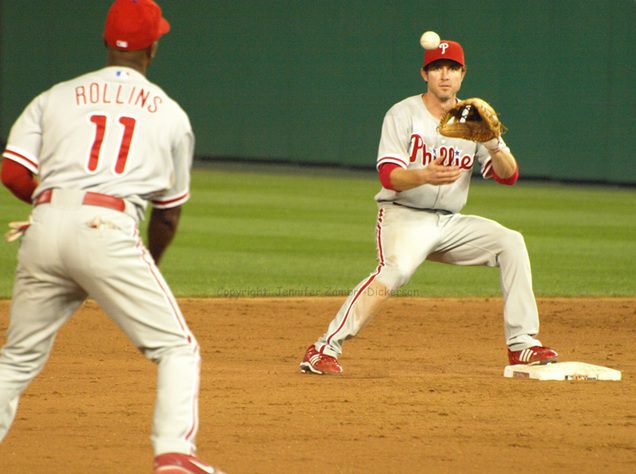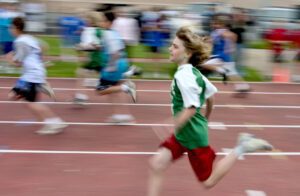Good pitching and defense are essential attributes that every baseball team should aspire to excell at. Most good pitchers tend to keep the ball on the ground and most of the balls that are kept on the ground end up in the vicinity of the shortstop or second baseman.
The shortstop is considered the centerfielder of the infield. He is usually the best athlete in the infield and if the ball is in his range he is expected to make a play on it. The second baseman has just as much range to cover as the shortstop, but has more time to make the short throw to first base.
Up until 15 to 20 years ago, when every player in the big leagues started to hit over thirty home runs a season, flawless defense was the primary concern for shortstops and second basemen. Now that baseball has “cleaned up” their game we have returned to an era where middle infielders rely on their gloves rather than their bats.
The first thing you should have learned from your little league or tee-ball coach was the ready position. How can you expect to make a play on the ball if you’re not in the ready position on the field? Some players think they have enough athletic ability to relax before the pitch is thrown, however if you watch the best defensive players in the MLB, they are always moving before the pitch is thrown.
Let’s check in with Major League shortstop Jed Lowrie on how he patrols the middle infield from the shortstop position:
A shortstop’s best friend in the infield has to be the second baseman, and they have to be in constant communication. Whether it’s who is going to cover the bag on an attempted stolen base or who has the cut-off throw, it’s important that they are on the same page. Each player also needs to know the other’s range and where they like to receive the baseball when turning a double play. That is why it is important to keep the same parings of shortstops and second basemen together during infield practice. The more games and practices that each player is able to perform with one another, the easier they will adopt and understand each other’s abilities and preferences.
Let’s turn to major league second baseman and former MVP, Dustin Pedroia, on how he prepares to play second base every day:
Now that you have a grasp on the fundamentals behind each middle infield position it’s time to get out there and begin putting your skills to work. As a middle infielder you need to take defense seriously, and let the corner infielders and outfielders worry about driving in runs as it is your job to prevent them. Just remember, if the opposition doesn’t score a run, there is no way they can win the game.
Be sure to check back in to CoachUp for more baseball training tips and suggestions!
How useful was this post?
Click on a star to rate it!
Average rating 0 / 5. Vote count: 0
No votes so far! Be the first to rate this post.



